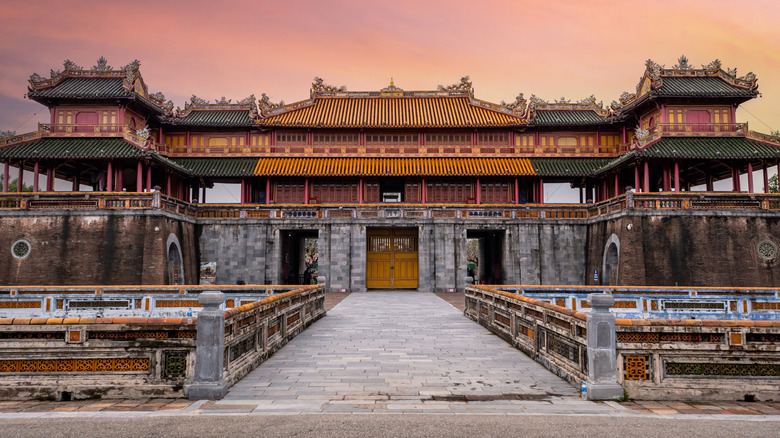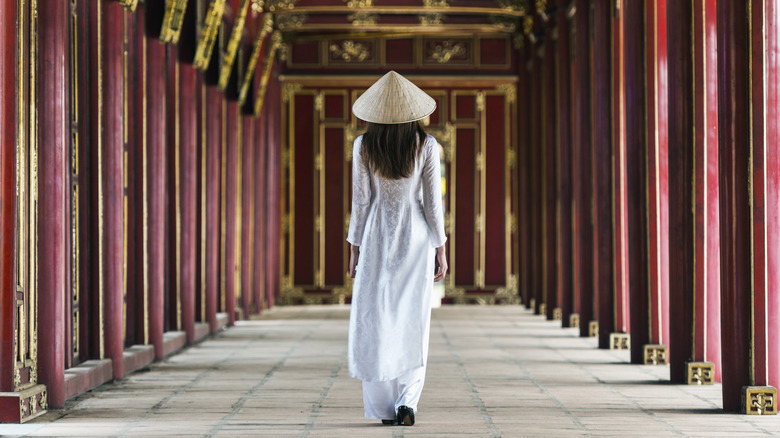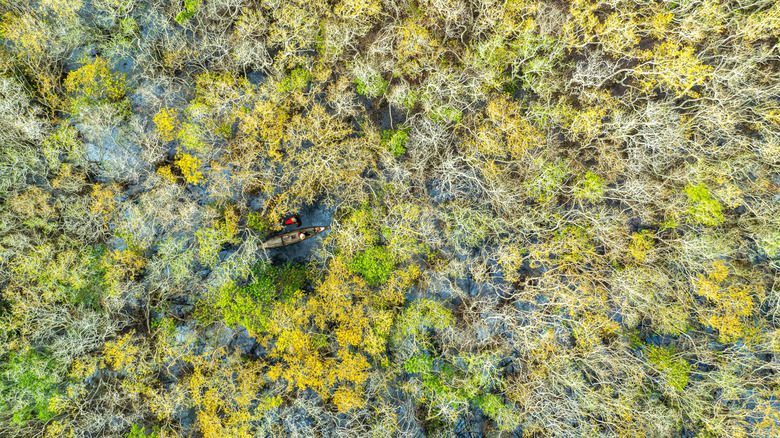An Under-The-Radar Vietnamese City Offers Unique Cultural Experiences And Stunning Nature
Vietnam is an affordable, touristy-friendly tropical paradise with many up-and-coming destinations. Besides the secret lagoons in the secluded Lan Ha Bay and the white sand beaches of Nha Trang, the former imperial capital of Vietnam, Hue, is a hidden gem worth exploring.
Hue is filled with important Vietnamese history. It has been a UNESCO World Heritage Site since 1993 and is famous for its iconic sites, distinctive cuisine, and nature. The best time to visit is in February and March when the weather is pleasant and dry. However, you can enjoy Hue any time of the year. Bring an umbrella and an extra sweater in winter, and be prepared to sweat buckets in warmer months. Different tiers of accommodations are available in Hue, from luxury villas to hostels and everything in between, so there is something for every budget.
Located in Central Vietnam, Hue is 58 miles north of Da Nang (which is famous for Ba Na Hills, a European village theme park with a cable car). You can get to the ancient city by train, bus, or private car. The bus and train are more economical, but booking in advance is required. The travel time between Da Nang and Hue is between two and three hours, depending on your mode of transportation and traffic conditions.
Explore Vietnamese history and culture in Hue
With the help of the French, Emperor Gia Long established the Nguyen Dynasty in 1802, making Hue the capital. He built a walled fortress modeled after China's Forbidden City, which became the administrative center and residence of the royal family. Today, the Hue Historic Citadel is the most coveted attraction in the city.
You can easily reach the citadel by walking or driving across the bridge over the Perfume River. You'll first see the imposing fort with a massive Vietnamese flag perched on top, along with guard stations and bastions. During the Vietnam War, there was intense hand-to-hand combat at this site, and now it greets visitors as they enter the historic city. At the Thai Hoa Palace (the Palace of Supreme Harmony), the Nguyen Dynasty's 13 emperors received foreign dignitaries. The emperor also addressed his officials and people at the top of the nearby Trung Dao Bridge.
The stunning grounds of the Purple City were once the site of the royal family's residence. Be sure to wander down the super Instagrammable red corridor. The emperor's harem, known as the Purple Forbidden Palace, was exclusively visited by the ruler. The Dien Tho Palace was the Queen Mother's home and audience hall. This magnificent Chinese-influenced architecture and decor are among the best-preserved in the citadel.
Hue's gorgeous nature
Some of Hue's most gorgeous outdoor spaces can be found in unexpected places. The final resting places of Gia Long and his queen are about 10 miles south of the city. Located on the banks of the Perfume River, stone dragons line the slate staircase leading to the Gia Long tomb complex. The grave and the temple are surrounded by lush greenery and a lotus lake. You can have a stroll or a bike ride along a pathway to take in the scenery.
Tam Giang Lagoon is the meeting point of many rivers and one of the largest freshwater systems in Southeast Asia. Just north of Hue, the over 20-square-mile lagoon is known for being one of the best sunset spots in the area. Historically, it served as the primary water access to the imperial city, but now it's a paradise for outdoor enthusiasts and seafood lovers. Stop by Chuon Lagoon, where you can immerse yourself in the local culture, especially during the fishing season between April and July.
Go for a stroll at the Ru Cha Mangrove Forest or hire a wooden boat to explore the scenery and lakes while listening to various birds. Here, you can see gorgeous fall foliage, especially from the observation deck. The Thai Duong Ha fishing village, the last of its kind in the area, has a bustling market and a beautiful temple. Fill your belly with some local cuisine — Bún riêu is a traditional soup with crab, tomato, shrimp, and tofu. You can also try cháo cá dìa (a fish congee) or bánh khoái, a Hue-specific crispy pancake with fish. Continue your trip at Hoi An, a vibrant Asian canal town that's like a mini Venice without the crowds and prices.


